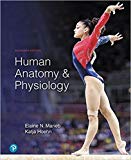
Concept explainers
Case summary:
Ms. Burton, 48 years aged woman, overweight, pale, and sweating reports about severe abdominal pain. Symptoms being 102 beats/min heart rate and BP is 145/98 mm Hg, with few signs of jaundice. She was also suffering from gallstone disease condition and reports to have pain in the epigastric region forwarding with the tip of the right shoulder. In medical history being reported for biliary colic.
Characters in the case:
A 48-year-old female named Ms. Burton.
Adequate information:
Severe and steady abdominal pain since last night with nausea and vomiting. Heart rate as 102 beats/min (beats per minute) and BP is 145/98 mm Hg (millimeters of mercury). Medical history with biliary colic;3–4 hours after having a high-fat meal as seven cheese pizza, pain becomes persistence.
To determine:
Various structures through which gallstones pass out.
Introduction:
Gallstone is a tiny rock-like structure that is formed inside the gallbladder. They are generally made from cholesterol or bile salts particles that clumps around and forms like a solid mass. The continuous accumulation of this causes its size to increase, but mostly the size of gallstones is small enough to pass out of the body via intestines without getting noticed.
Want to see the full answer?
Check out a sample textbook solution
Chapter 23 Solutions
Human Anatomy & Physiology Plus Modified Mastering A&P with Pearson eText -- Access Card Package 11th edition
- Describe the levels of structural hierarchy for the human body, starting with the organismal level and ending with the chemical level. In addition, you should make sure you link each level to the previous level, emphasizing the structural relationships.arrow_forward9 S es Read the section "Investigating Life: In (Extremely) Cold Blood." Then, drag and drop the terms on the left to complete the concept map. Red blood cells Genes Icefishes -have mutated have colorless Oxygen have few lack encode Blood Cellular respiration consists of- contain carries is a Platelets White blood cells carries low amounts of Hemoglobin is necessary for Plasma Protein Reset.arrow_forwardPlating 50 microliters of a sample diluted by a factor of 10-6 produced 91 colonies. What was the originalcell density (CFU/ml) in the sample?arrow_forward
- Every tutor here has got this wrong, don't copy off them.arrow_forwardSuppose that the population from question #1 (data is in table below) is experiencing inbreeding depression (F=.25) (and no longer experiencing natural selection). Calculate the new expected genotype frequencies (f) in this population after one round of inbreeding. Please round to 3 decimal places. Genotype Adh Adh Number of Flies 595 Adh Adh 310 Adhs Adhs 95 Total 1000 fladh Adh- flAdn Adh fAdhs Adharrow_forwardWhich of the following best describes why it is difficult to develop antiviral drugs? Explain why. A. antiviral drugs are very difficult to develop andhave no side effects B. viruses are difficult to target because they usethe host cell’s enzymes and ribosomes tometabolize and replicate C. viruses are too small to be targeted by drugs D. viral infections usually clear up on their ownwith no problemsarrow_forward
- This question has 3 parts (A, B, & C), and is under the subject of Nutrition. Thank you!arrow_forwardThey got this question wrong the 2 previous times I uploaded it here, please make sure it's correvct this time.arrow_forwardThis question has multiple parts (A, B & C), and under the subject of Nutrition. Thank you!arrow_forward
- Calculate the CFU/ml of a urine sample if 138 E. coli colonies were counted on a Nutrient Agar Plate when0.5 mls were plated on the NA plate from a 10-9 dilution tube. You must highlight and express your answerin scientific notatioarrow_forwardDon't copy off the other answer if there is anyarrow_forwardAnswerarrow_forward
- Understanding Health Insurance: A Guide to Billin...Health & NutritionISBN:9781337679480Author:GREENPublisher:Cengage
 Medical Terminology for Health Professions, Spira...Health & NutritionISBN:9781305634350Author:Ann Ehrlich, Carol L. Schroeder, Laura Ehrlich, Katrina A. SchroederPublisher:Cengage Learning
Medical Terminology for Health Professions, Spira...Health & NutritionISBN:9781305634350Author:Ann Ehrlich, Carol L. Schroeder, Laura Ehrlich, Katrina A. SchroederPublisher:Cengage Learning





